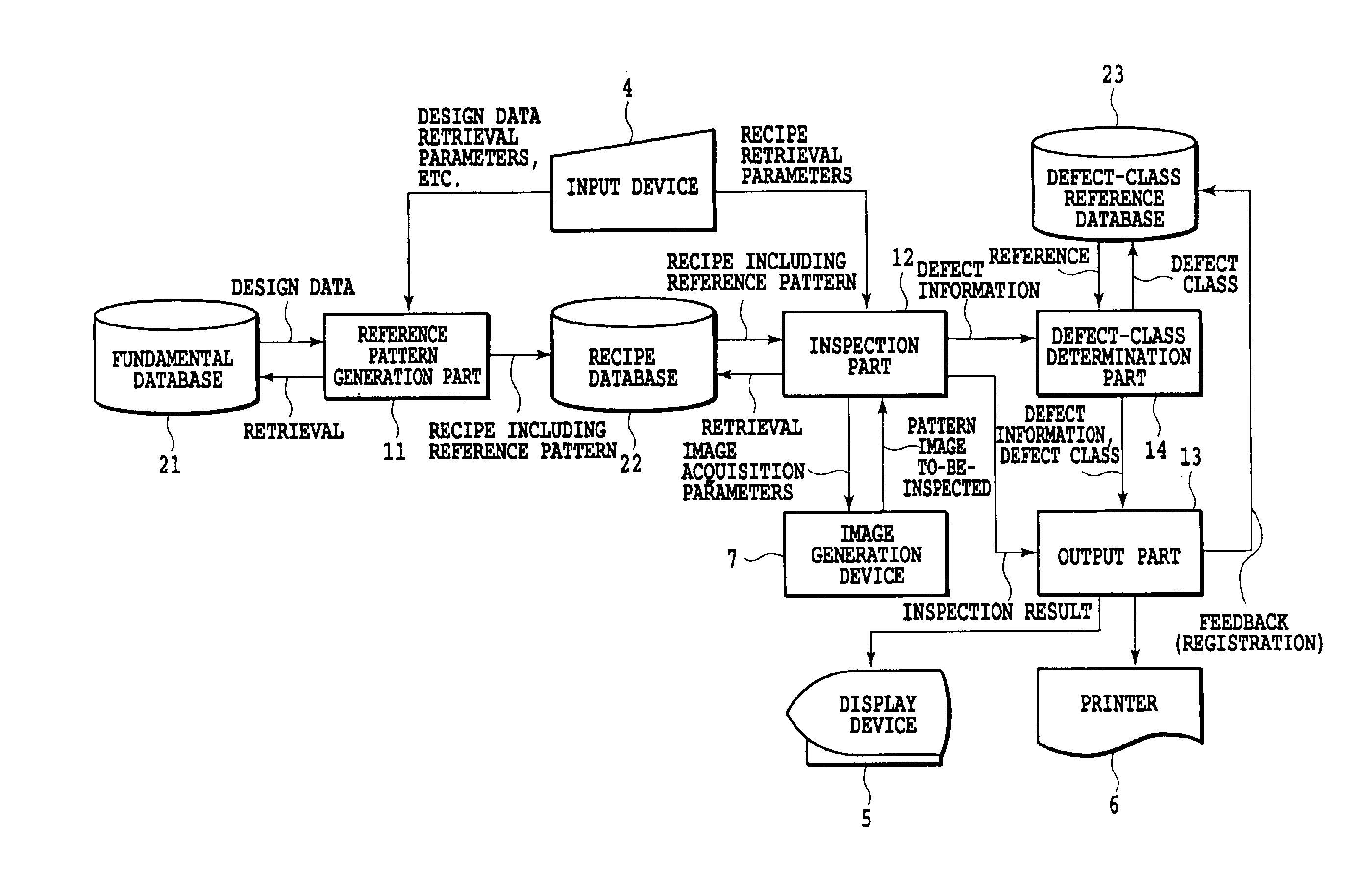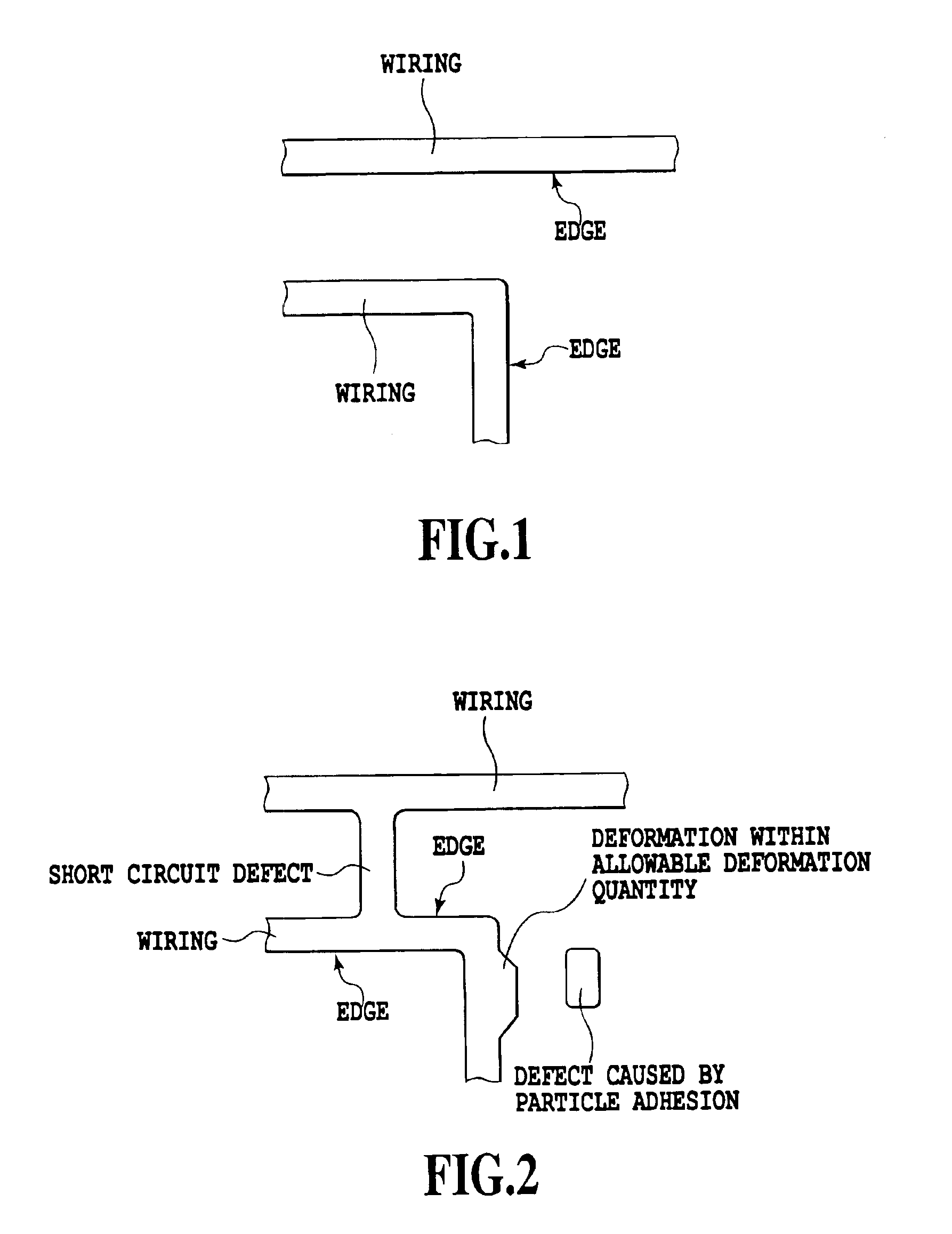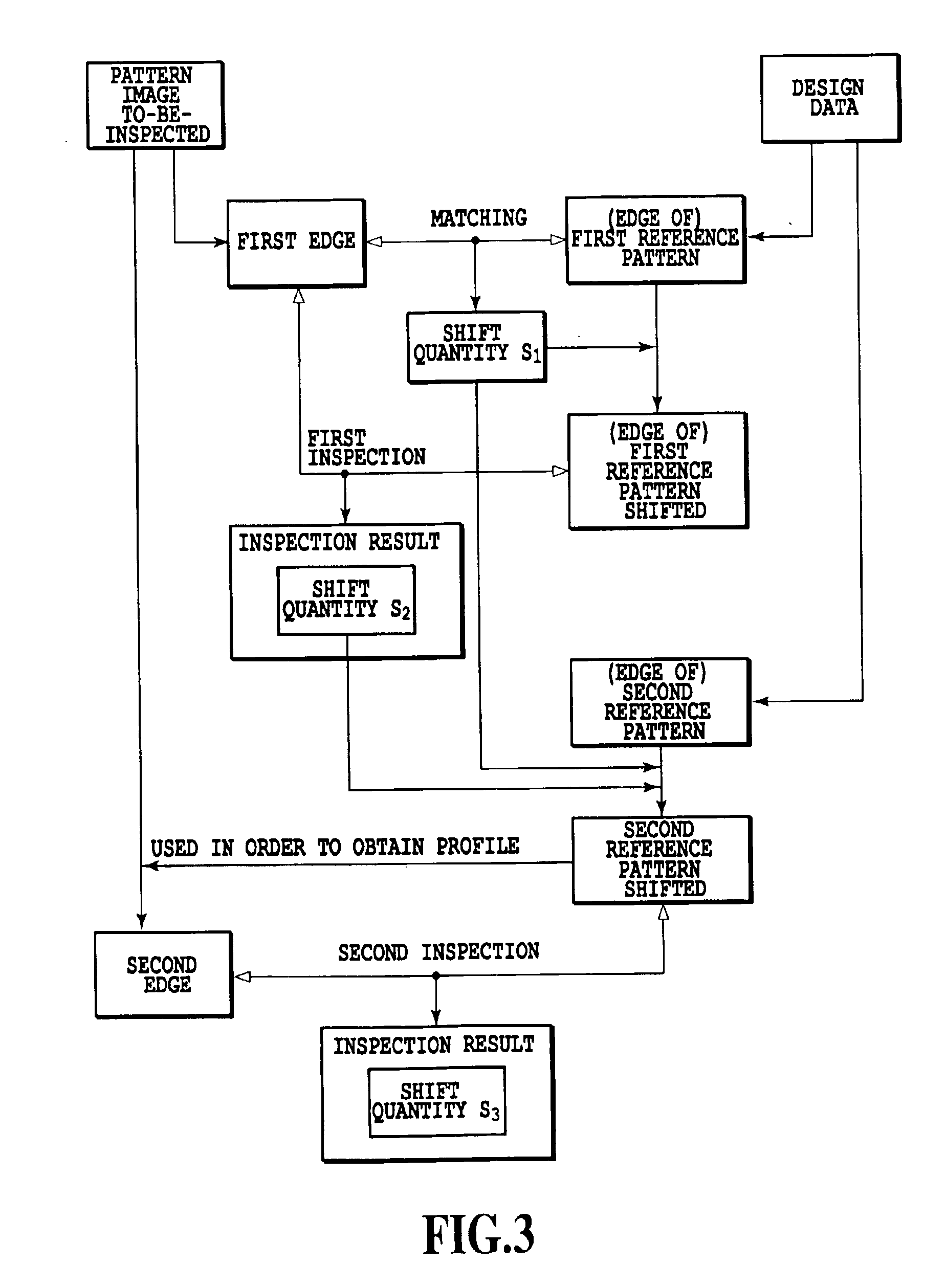Pattern inspection apparatus, pattern inspection method, and recording medium
a pattern inspection and recording medium technology, applied in the direction of originals for photomechanical treatment, instruments, image enhancement, etc., can solve the problems of systematic failure, minute defects not recognized in the corners, and recognition of defects as defects, so as to achieve stable defect detection
- Summary
- Abstract
- Description
- Claims
- Application Information
AI Technical Summary
Benefits of technology
Problems solved by technology
Method used
Image
Examples
Embodiment Construction
Hereafter, referring to the drawings, preferred embodiments of the present invention will be described in detail.
FIG. 1 is a diagram showing an example of a theoretical pattern based on the design data, and FIG. 2 is a diagram showing an example of a pattern actually manufactured based on the design data (actual pattern). As shown in FIG. 2, the actual pattern may have a short circuit defect, a defect caused by particle adhesion, and a deformation within the allowable pattern deformation quantity. Therefore, the actual pattern becomes somewhat different from the pattern theoretically obtained on the basis of the design data.
A pattern inspection apparatus according to this embodiment performs the inspection by comparing a pattern to-be-inspected (for example, the pattern shown in FIG. 2) with a reference pattern (for example, the pattern shown in FIG. 1).
FIG. 3 is a diagram showing the outline of the inspection processing which the pattern inspection apparatus according to this embod...
PUM
 Login to View More
Login to View More Abstract
Description
Claims
Application Information
 Login to View More
Login to View More - R&D
- Intellectual Property
- Life Sciences
- Materials
- Tech Scout
- Unparalleled Data Quality
- Higher Quality Content
- 60% Fewer Hallucinations
Browse by: Latest US Patents, China's latest patents, Technical Efficacy Thesaurus, Application Domain, Technology Topic, Popular Technical Reports.
© 2025 PatSnap. All rights reserved.Legal|Privacy policy|Modern Slavery Act Transparency Statement|Sitemap|About US| Contact US: help@patsnap.com



